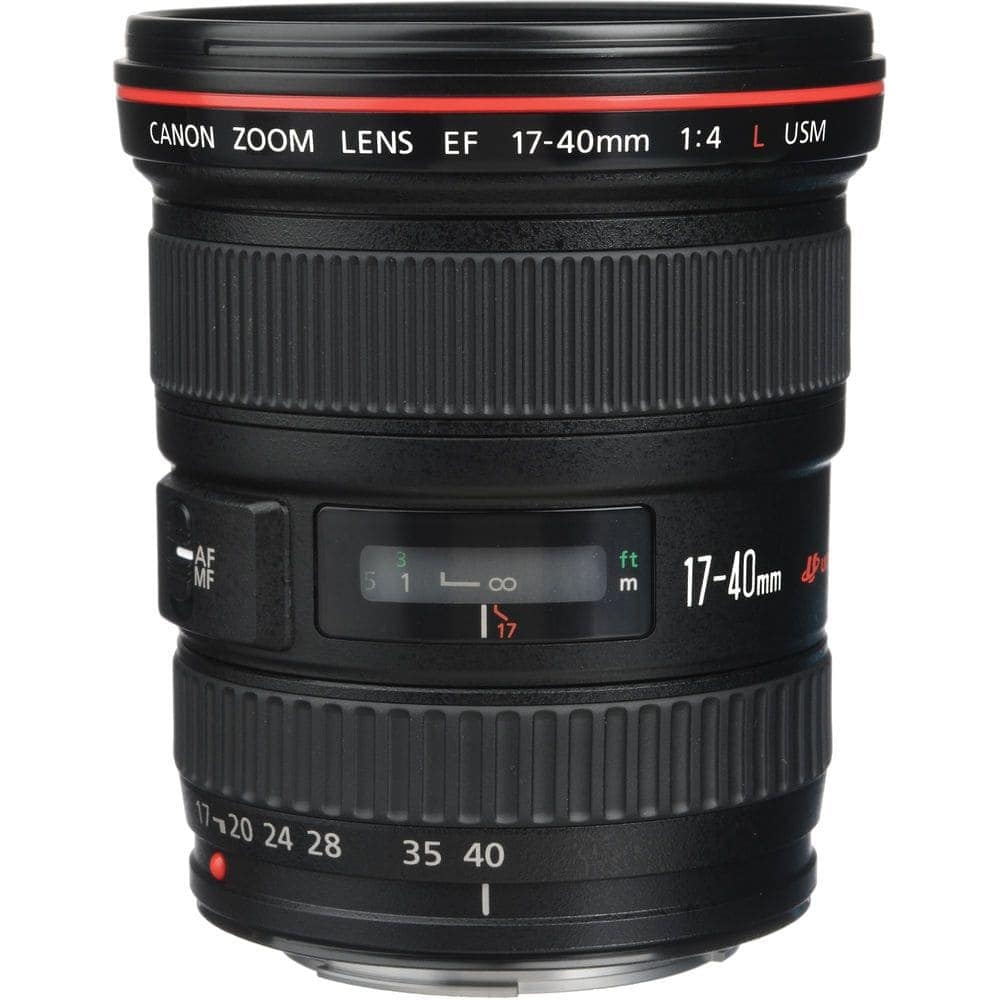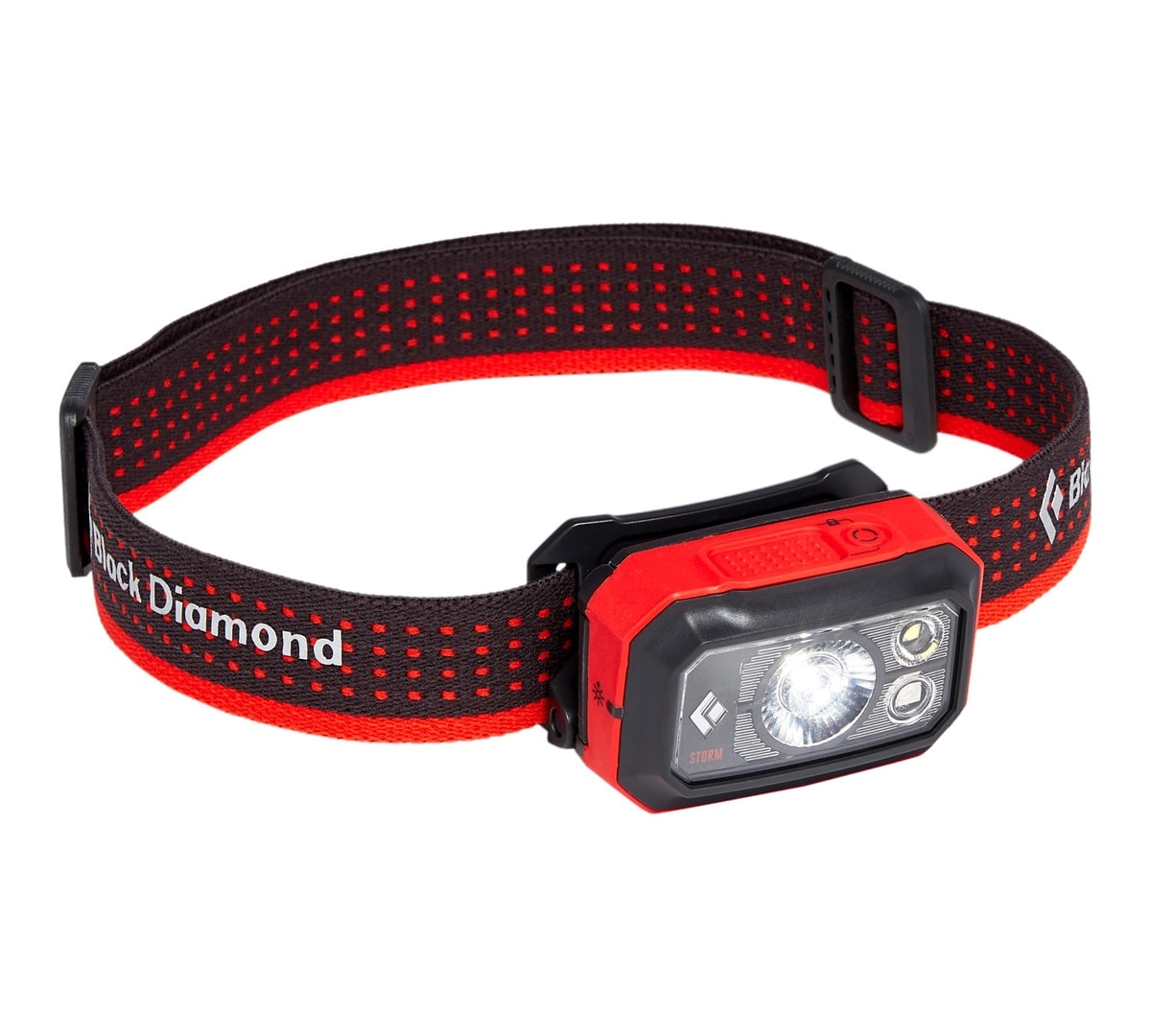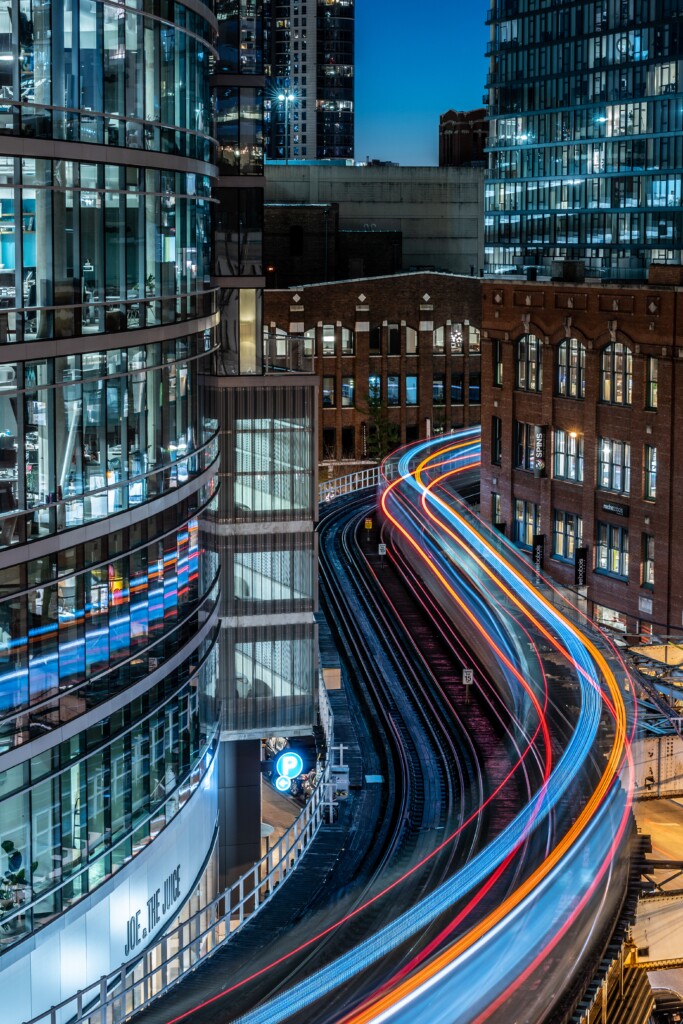The Best Camera Settings For Traffic Trail Photography
Choosing the best camera settings for photographing traffic trails is an important part of getting the shot you want. However, there’s a lot more that goes into this fun style of photography than just camera settings. It’s also essential to consider the gear you are using, what location you visit, and the composition of your frame! This article covers the ins and outs of traffic trail photography and teaches you the best camera settings for photographing traffic trails at night. So let’s jump in!
What Is Traffic Trail Photography?
Traffic trails, also known as light trails, are an awesome in-camera effect created with a slow shutter speed. When you are using a slow shutter speed of 30 seconds, for example, anything that moves will become completely blurred in your frame. Mix this with the lights of a moving car, and you create a single light streak across your frame. This is a really easy way to add more dimension to your photos!
Traffic trails only tend to work when it’s night time for a couple of reasons. The first and most important reason is that night time is when cars have their lights turned on! Without the lights, you would completely miss the traffic trail effect you’re going for. The other reason why it’s best to capture these photos at night is because of your shutter speed. To capture a nice long traffic trail, you need to use a very slow shutter speed. After all, the longer the shutter stays open, the more time the lights have to blur through the frame!
The trouble is, a slow shutter speed lets a whole lot more light into your camera, making for a much brighter photo. In the middle of the day, this would cause your image to be completely overexposed. However, under the darkness of night, a slow shutter speed can be accommodated without issues!
Choosing The Best Location To Capture Traffic Trails
Before you can ever consider taking a photo, you need to plan out your location. When it comes to traffic trails, the location can make or break your image. The first thing you want to ask yourself is how many light trails you want in your photo. If you want to keep the trails to a minimum, you’ll want to opt for a more rural area with less traffic. Otherwise, you’ll need to head out at a much later hour of the night when there’s less traffic on the road.
If you want to have a ton of light trails in your frame, heading to the city will always be the best option. Better yet, finding a highway or main road that leads to the city center is an excellent option for traffic trails. Whenever you’re taking photos of traffic trails, walk around and try to find unique compositions. Try to find frames where you can incorporate an extra point of interest in your photo. Things like a city skyline, tunnel, or a bridge work great when photographing traffic trails.
Some of the best places to get unique vantage points are from the top of overpasses. Here you can get right over the traffic and get an expansive view of the surrounding area. Whether it’s the sidewalk on a bridge or a pedestrian walkway, these are great options for better traffic trail photos.
If you aren’t super familiar with the city you’re photographing, be sure to check out google earth to find unique locations. This is an easy (and free) method to plan out your night before you ever get there!
The Essential Gear For Photographing Traffic Trails
While you’re photographing at night, you’ll come across a whole new set of challenges. It’s essential to bring the right gear with you to make your experience as positive as possible! Let’s go over a few must-have gear items for taking on the night.
#1. Tripod
Most importantly, you need a tripod for photographing traffic trails. Since you are using a slow shutter speed, your camera must stay completely still. No amount of MacGyvering or balancing your camera on a railing will beat out the versatility of a tripod. With a tripod, you can set the exact position you’re looking for, with the assurance of rock steady stability. Besides traffic trails, tripods have a plethora of other uses for photographers. From long exposure photos, enhanced image sharpness, and improved low light capabilities, tripods are a useful all-purpose tool. Learn more about tripods in photography here.
#2. Wide Angle Lens
The lens choice you choose is a big one when photographing traffic trails at night. Commonly you’ll find yourself shooting close to the traffic like on a sidewalk. To get everything you want in the frame, you need the widest field of view possible. A wide angle lens could be considered as 35mm or wider. However, an optimal range for traffic trail photography is between 10-18mm. With a wider field of view, you have the option to create a more dynamic composition.
Shop Wide Angle Lenses On Amazon
#3. Headlamp
This one tool is something many of us forget about until it’s too late. When you’re out photographing traffic trail at night, it can be pretty frickin dark! A headlamp is an easy way to light up the night and make it easier to find things in your camera bag. If you don’t already have one, I would highly suggest ordering a headlamp for night photography. Rather than a regular torchlight, a headlamp is totally hands-free. This is perfect for making adjustments to your camera while being able to actually see!
#4. Layers!
Even in the middle of summer, it can get cold at night! The last thing you want is to have to call it early because you were too cold. Be sure to pack yourself a set of warm layers to take with you when you’re photographing traffic trails. Along with a warm coat, having a set of glove liners can also be useful if you tend to get cold fingers like me!
The Best Camera Settings For Photographing Traffic Trails
Now let’s get into the meat of what you’re here for. There aren’t any specific settings that will work for all traffic trail photos. The perfect settings will depend on the situation and the amount of light around you. With that said, there are a few great rules of thumb to help you choose the best camera settings for photographing traffic trails. In this section, I’ll break down what settings matter most and a good starting ground to work from.
In a nutshell, here are the best camera settings for photographing traffic trails at night:
- Shutter Speed: 15+ seconds (or longer if you wish!)
- Aperture: F/8 – F/11
- ISO: ISO100 (or no higher than ISO400)
- Focus Type: Manual
- White Balance: Tungsten or between 3200K – 4000K
- Camera Mode: Shutter Priority or Manual Mode
- File Format: RAW
To give you a little more reasoning and understanding behind these camera settings for traffic trail photography, let’s break them down individually.
– Shutter Speed
Using a shutter speed of 15 seconds or longer is a must for excellent traffic trail photos. 15 seconds is a good starting ground to create nice long streaks that fill your entire frame. If you are in a darker area with fewer street lights, you could opt for a slower shutter speed like 30 seconds. How slow your shutter actually ends up being will depend on how dark it is around you. Using 15 seconds as a base is a suitable place to aim for when first choosing your camera settings for traffic trail photography.
Learn more about shutter speed and its effects on your images.
– Aperture
It’s uncommon for traffic trail photos to have a shallow depth of field. Since they’re typically showcasing an entire scene, it’s best practice to keep more in focus. A nice mid-range aperture setting such as F/8 is a perfect starting ground for when photographing traffic trails. Since it has a wider depth of field, you can be confident the important aspects of your image remain sharp.
More often than not, an aperture of F/8 will work fine for traffic trails. However, if you find yourself under a streetlight where it’s a bit brighter, you can use a smaller aperture like F/11 to compensate. Stick within the aperture range of F/8 – F/11, and you can’t go wrong!
Learn more about aperture and depth of field in photography.
– ISO
The ISO setting should be used sparingly when photographing traffic trails. This camera setting works by increasing the sensitivity of the sensor to create a brighter image. With a higher ISO, comes more noise that becomes especially noticeable in dark areas of the picture. As it so happens with traffic trail photography, there are a lot of dark areas in your photo! To make sure you have the best image quality possible, make sure to keep your ISO at ISO400 or lower. You could even leave it set to ISO100 and only adjust it if your image is still extremely dark. If that’s that case, you can always open your aperture or slow down your shutter to brighten your exposure.
Learn more about how to use ISO more effectively.
– Focus Type: How To Get Proper Focus At Night
Manual focus is an absolute must for traffic trail photography. When you’re in a low light situation, the automatic focus will have a hard time locking on to a focus point. That’s why manual focus is necessary when taking photos at night. Of course, it can still be equally challenging for you to find focus at night, so what’s the trick?
After you switch into manual focus, use the digital zoom feature in Live View on your cameras LCD screen. The icon is typically noted as a magnifying glass on most cameras. This lets you punch into the photo to see exactly what’s in focus. From here, try to find a light source such as a street light or building to grab focus from. Once you’ve set focus on a light source in your scene, you’re good to go! After you’ve set your manual focus, you won’t need to touch it again until the next setup.
– White Balance
The white balance setting is the way you accurately display the colors in your photo. Without the proper white balance, you can end up with weird hues in your image. A lot of photographers tend to use an auto white balance setting. With night photography, auto white balance tends to look quite yellow and unappealing. Using one of the preset white balances such as tungsten is an easy way to correct things in-camera.
If you feel like having even more customization, try using a custom white balance setting! When using a custom white balance, something between 3200K – 4000K is an optimal setting for traffic trail photography.
Learn more about white balance and its creative uses.
– Camera Modes
The camera mode dictates the way your camera captures an image. When it comes to photographing traffic trails, your shutter speed setting is most important to get the results you need. That’s why camera modes such as automatic won’t work when photographing traffic trails. Since automatic mode doesn’t understand your creative intent, it just tries to create a balanced exposure. To get total control over your shutter, you need to use Shutter Priority or Manual Mode.
Shutter Priority is a semi-automatic camera mode perfect for those not comfortable with full manual. This camera mode gives you total control of the shutter while choosing the other settings for you. If you want to make life easy and just focus on your shutter speed, this is an excellent camera mode to use.
Manual Mode, on the other hand, gives you complete control. With this camera mode, you’re in charge of setting your shutter speed, aperture, ISO, and all other additional settings. This is ideal if you want to make sure your settings match your creative intent. Manual mode is the best way to get the most out of your camera!
You can’t go wrong with either camera mode. Ultimately it comes down to your level of comfort with your camera and related settings.
– File Format
Using the RAW file format is best for traffic trail photography because you can recover the most detail in post. RAW files are uncompressed and can be manipulated heavily without any loss in quality. When you’re taking photos at night, this is a huge advantage! You can easily brighten up the shadows and improve your overall exposure with the click of a slider. If you were to shoot the same image in JPEG, you would be much more limited.
With that said, don’t bother using a RAW file format unless you intend to edit your photos. JPEG files make life easy and are ready to be uploaded and shared once you import. RAW files need to be converted over the JPEG (after the editing process) before you can do anything with them. If you don’t edit your images, you’ll just be creating a lot more work for yourself by shooting in RAW.
Learn the differences between RAW and JPEG files in photography.
What To Set Focus On When Photographing Traffic Trails
The big question remaining when choosing the best settings for traffic trail photography comes down to focus. What the heck are you supposed to focus on? A lot of people will try to set focus on the cars, which can be a challenging process. Trying to check manual focus on a moving subject in the dark does not sound like a good time. Luckily you don’t need to!
When you’re taking traffic trail photos, set focus on the surrounding area. I typically like to set focus on a building in the background or a barrier along the roadway. These are easy (and stationary) objects in your frame to set focus on at night. Just make sure they’re lit up, of course.
If you find yourself in an extremely dark environment, look for a light source such as a street light to set focus on!
How To Check Your Exposure At Night
When there’s a supreme lack of night, it can be challenging to know if you’re actually capturing the right exposure. In low light settings, it’s uncommon that your light meter offers any useful insight. That’s why you need to rely on a different tool called the histogram.
A histogram is a tool that displays your exposure through a graph. With one, it’s easy to see if you’re clipping the exposure in the highlights or shadows. To put it simply, if your histogram is touching either the left or right edge, you have no details in those areas. At night, your histogram will typically favor the darker exposures meaning it bunches up on the left. This is nothing to worry about, as long as the pixels aren’t touching the leftmost edge. If you notice this happening, you need to brighten your exposure to bring back the lost details. You can learn more about how to use and read a histogram here.
The histogram is the best tool to help you check your exposure at night because it shows your whole image. Rather than just sampling the light in the scene, your histogram showcases the individual exposure of all your pixels. This way, even when it’s completely dark, you know exactly what exposure values are present in your image.
Conclusion
Learning how to photograph traffic trails is a fun and creative style perfect for all levels of photographers. If you want to capture the images like what you envision, you must use the right settings. I hope this post helped you to discover all the best camera settings for photographing traffic trails, so you can head out into the night with confidence.
Rather than using the settings in this guide as a be-all-end-all, use them as a base. Different shots and situations may require alternate settings, but the ones shared here are a great starting ground. Now that you know more about what goes into photographing traffic trails, it’s time to put it into practice!
If you know someone who would love traffic trail photography, be sure to share this guide with them and support the blog!
If you want to continue challenging your photography, be sure to download my free 12-Week Photography Blueprint. This Blueprint offers new challenges and photography techniques to help you level up your photography over 90 days! Sign up below to get access:
Disclaimer: Some of the links in this article are affiliate links. By clicking on these links, I may receive a commission at no extra cost to you. This commission helps to support this blog and the creation of more free content! Thank you for your support and understanding.




















